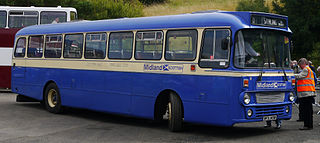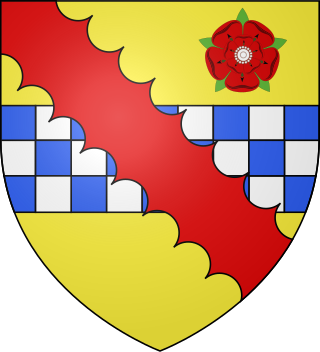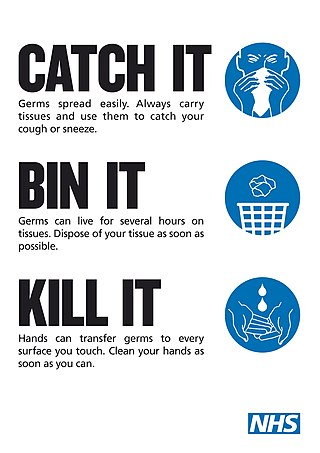The politics of Edinburgh are expressed in the deliberations and decisions of the City of Edinburgh Council, in elections to the council, the Scottish Parliament and the UK Parliament.
Advertising slogans are short phrases used in advertising campaigns to generate publicity and unify a company's marketing strategy. The phrases may be used to attract attention to a distinctive product feature or reinforce a company's brand.

A burgh is an autonomous municipal corporation in Scotland and Northern England, usually a city, town, or toun in Scots. This type of administrative division existed from the 12th century, when King David I created the first royal burghs. Burgh status was broadly analogous to borough status, found in the rest of the United Kingdom. Following local government reorganisation in 1975, the title of "royal burgh" remains in use in many towns, but now has little more than ceremonial value.

Midland Scottish Omnibuses Ltd was a bus operating subsidiary of the Scottish Transport Group formed in June 1985 from part of W. Alexander & Sons (Midland) Ltd, and operated until 1991 when it was renamed Midland Bluebird Ltd.
Michael Kelly is a Scottish Labour politician and businessman. He graduated from the University of Strathclyde and became a lecturer in economics there and a Labour councillor. From 1984 he was managing director of Michael Kelly Associates, a PR company. He held the position of Lord Provost of Glasgow from 1980 to 1984, and was Rector of the University of Glasgow from 1984 to 1987. As Lord Provost, he was instrumental in the city's adoption of the Glasgow's miles better campaign and slogan, which is credited with an important role in Glasgow's cultural renaissance during the 1980s. A member of one of the families that had controlled Celtic F.C. since its foundation, he sat on the club's board of directors until 1994, when the club reached the verge of bankruptcy and the much-criticised old regime was ousted by Fergus McCann's takeover.

The Northern Lighthouse Board (NLB) is the general lighthouse authority for Scotland and the Isle of Man. It is a non-departmental public body responsible for marine navigation aids around coastal areas.

Walter Stewart, 1st Lord Blantyre was a Scottish courtier, politician and judge. Educated with James VI under George Buchanan at Stirling Castle, he was a gentleman in the king's chamber, Knight of Cardonald, Prior of Blantyre, Keeper of the Privy Seal of Scotland from 1582 to 1596, an Extraordinary Lord of Session from 1593, an Octavian from 1596, and Treasurer of Scotland from 1596 to 1599

The Right Honourable Lord Provost of Edinburgh is elected by and is the convener of the City of Edinburgh Council and serves not only as the chair of that body, but as a figurehead for the entire city, ex officio the Lord-Lieutenant of Edinburgh and honorarily the Admiral of the Firth of Forth. It is the equivalent in many ways to the institution of Mayor that exists in many other countries.
A bailie or baillie is a civic officer in the local government of Scotland. The position arose in the burghs, where bailies formerly held a post similar to that of an alderman or magistrate. Baillies appointed the high constables in Edinburgh, Leith and Perth. Modern bailies exist in Scottish local councils, with the position being a courtesy title and appointees often requested to provide support to the lord provost or provost - the ceremonial and civic head of the council - in their various engagements.

Sir John Struthers MD FRCSE FRSE was the first Regius Professor of Anatomy at the University of Aberdeen. He was a dynamic teacher and administrator, transforming the status of the institutions in which he worked. He was equally passionate about anatomy, enthusiastically seeking out and dissecting the largest and finest specimens, including whales, and troubling his colleagues with his single-minded quest for money and space for his collection. His collection was donated to Surgeon's Hall in Edinburgh.

Collett Dickenson Pearce & Partners (CDP) was a British advertising agency which operated from 1960 till 2000. It was founded by John Pearce and Ronnie Dickenson who bought an existing agency owned by John Collett. The agency played a pivotal role in London's cultural shift of the 1960s and was a nursery for a number British creative entrepreneurs who would later enjoy famed careers.

Greyfriars Kirkyard is the graveyard surrounding Greyfriars Kirk in Edinburgh, Scotland. It is located at the southern edge of the Old Town, adjacent to George Heriot's School. Burials have been taking place since the late 16th century, and a number of notable Edinburgh residents are interred at Greyfriars. The Kirkyard is operated by City of Edinburgh Council in liaison with a charitable trust, which is linked to but separate from the church. The Kirkyard and its monuments are protected as a category A listed building.

British Coachways was a consortium of independent coach operating companies in the United Kingdom. Formed immediately after the deregulation of coach services in October 1980, it competed with the state-owned National Express and Scottish Bus Group on a range of long-distance routes. Initially composed of six members, it varied in size and composition over its two years of operation to include a range of ten different companies.

Edinburgh City Chambers in Edinburgh, Scotland, is the meeting place of the City of Edinburgh Council and its predecessors, Edinburgh Corporation and Edinburgh District Council. It is a Category A listed building.

The history of advertising in Britain has been a major part of the history of its capitalist economy for three centuries. It became a major force as agencies were organized in the mid-19th century, using primarily newspapers and magazines. In the 20th century, It grew rapidly with new technologies, such as direct mail, radio, television. In the late 19th century, home-based British agencies were swallowed up and became branches of international firms, but London remains one of the world's most important advertising centers. Radical changes have come recently because of the new roles for the Internet and smart phones. For current conditions see Advertising.

The Third Commonwealth Paraplegic Games was a multi-sport event that was held in Edinburgh, Scotland from 26 July to 1 August 1970. Dubbed the "little games", they followed the 1970 British Commonwealth Games which were held in Edinburgh from 16 to 25 July of that year.

"Catch It, Bin It, Kill It" is a slogan used in several public health campaigns of the British government to promote good respiratory and hand hygiene by recommending carrying tissues, using them to catch a cough or sneeze, disposing of them immediately in a waste bin and then killing any remaining viruses by washing hands or using hand sanitiser. In 2007, following evidence that good respiratory and hand hygiene might reduce the spread of flu, the phrase appeared in a government campaign that publicised the directive "Catch it, Bin it, Kill it" throughout the NHS, on buses and trains and in libraries, shopping centres and police stations.
The Lord Provost's Rent Relief Cup comprised two separate football tournaments played in aid of the Lord Provost's Rent Relief Fund in 1921. Held in Edinburgh and Glasgow, both were one-off competitions. Various other tournaments and events were held to help the unemployed in 1921.














